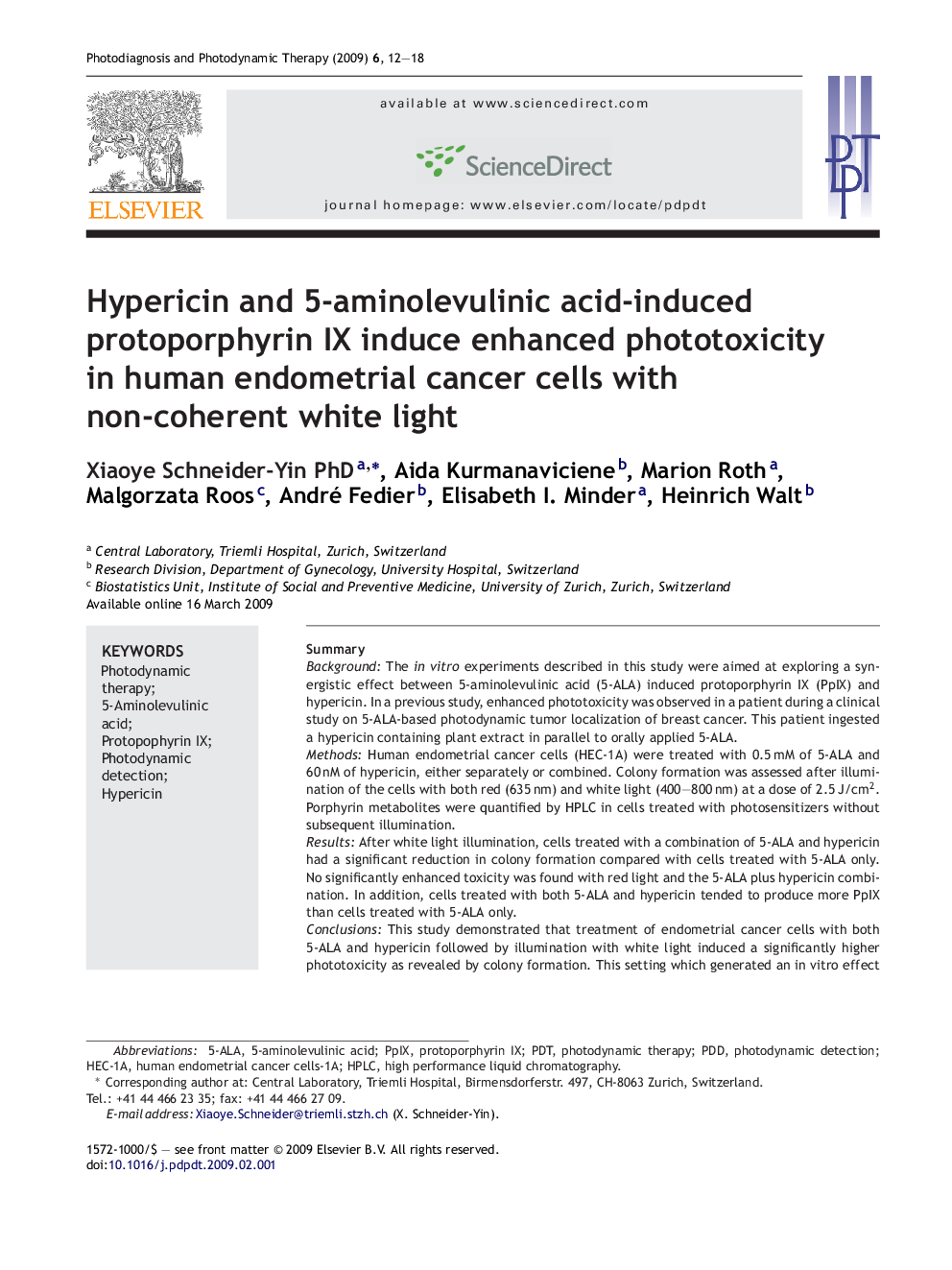| کد مقاله | کد نشریه | سال انتشار | مقاله انگلیسی | نسخه تمام متن |
|---|---|---|---|---|
| 3816668 | 1246258 | 2009 | 7 صفحه PDF | دانلود رایگان |

SummaryBackgroundThe in vitro experiments described in this study were aimed at exploring a synergistic effect between 5-aminolevulinic acid (5-ALA) induced protoporphyrin IX (PpIX) and hypericin. In a previous study, enhanced phototoxicity was observed in a patient during a clinical study on 5-ALA-based photodynamic tumor localization of breast cancer. This patient ingested a hypericin containing plant extract in parallel to orally applied 5-ALA.MethodsHuman endometrial cancer cells (HEC-1A) were treated with 0.5 mM of 5-ALA and 60 nM of hypericin, either separately or combined. Colony formation was assessed after illumination of the cells with both red (635 nm) and white light (400–800 nm) at a dose of 2.5 J/cm2. Porphyrin metabolites were quantified by HPLC in cells treated with photosensitizers without subsequent illumination.ResultsAfter white light illumination, cells treated with a combination of 5-ALA and hypericin had a significant reduction in colony formation compared with cells treated with 5-ALA only. No significantly enhanced toxicity was found with red light and the 5-ALA plus hypericin combination. In addition, cells treated with both 5-ALA and hypericin tended to produce more PpIX than cells treated with 5-ALA only.ConclusionsThis study demonstrated that treatment of endometrial cancer cells with both 5-ALA and hypericin followed by illumination with white light induced a significantly higher phototoxicity as revealed by colony formation. This setting which generated an in vitro effect similar to the patient's situation, might be applied in the future as an affordable and effective photodynamic therapy (PDT) modality.
Journal: Photodiagnosis and Photodynamic Therapy - Volume 6, Issue 1, March 2009, Pages 12–18